Pre 1800
Cornet Dickinson
Gazetted (London), 24th of April 1798, Loyal Leicestershire
Gentlemen and Yeomanry, Cornet - Dickinson to be
Lieutenant, Vice. Noble, promoted in the Leicestershire Militia.
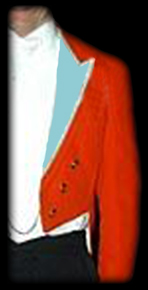 |
Its a point to note that the facings of the Quorn
Hunt's evening tails are "sky blue", this appears to be
more than coincidence when it comes to the colours of
the facings and overalls of the Loyal
Leicestershire Regiment of Yeomanry Cavalry. More
research will have to be done to see if there is a firm
connection between the regiment and the Quorn Hunt's
choice of colour. The Quorn Hunt was founded in 1753 and
therefore the Gentlemen of Leicestershire who saw
service in their County Yeomanry cavalry might have
chosen this colour in connection with the Quorn Hunt,
this is just speculative guess until proof can be found
of a connection. |
The Gentleman's magazine Vol.66 P.II 1796
Country News Oct 7th 1796
This day "The Loyal Leicestershire Regiment of Gentlemen
and Yeomanry Cavalry" was reviewed by their Colonel Sir William
Skeffington in the Abbey Meadow. The Corps performed their
several evolutions etc with a precision and exactness that would
have done the honour to veteran Troops, greatly to the
satisfaction of the Colonel and a numerous and elegant
assemblage of distinguished characters of the County. On
quitting the field, the Colonel, with his usual animation
addressed each Squadron of the Regiment as he went down the line
with an appropriate speech, the purport of which was to thank
them for their soldier like appearance and the adroitness with
which they performed every part of their exercise, and in the
politest terms delivered his highest praise for the zeal and
attention they showed on every occasion reflecting so much
honour on themselves, and equally gratifying and obliging to him
as Colonel of so meritorious a Corps. What added greatly to the
splendour of the day was the disposal of the Loyal
Leicestershire Infantry, which was so judiciously executed by
Captain Walker, Commandant of the Corps and his Officers that
the field exercise was kept clear of all obstructions and
rendered additionally brilliancy to the spectacle by their
appearance.
The Gentleman's magazine Vol.64 P.II page 857
Historical Chronicle
This day the Leicestershire Volunteer Cavalry received their
standards in form; as ceremony as interesting and splendid as
the occasion was momentous and glorious; the appearance of three
hundred respectable neighbours, voluntary standing forth in the
defence of their Country, attended by the civil power of the
County and Town, as if unifying themselves in support of each
other; honoured by the preference and respect of the
neighbouring Nobility and gentry; surrounded by a generous
concourse of their fellow countrymen; and crowned with the
appreciation and smiles of all the beauties in Leicestershire,
who seemed to look up to them as to the "manly hearts who guard
the fair"! - Early in the morning an officers guard, under the
commend of Captain Lieutenant Burnaby, mounted guard at
headquarters and attended the person of the Colonel (Sir William
Skeffington) through the day. At eleven o'clock the Troops
assembled, from their different alarm posts and formed a hollow
square in the Market place; after which an officers guard, from
the Colonels Troop, conducted Miss Linwood attended by Mr
Hungerford (who represented the Lord lieutenant of the County)
and a splendid assemblage of ladies and gentlemen of the county
and town, to headquarters, with the truly elegant banner which
that lady whose un equalled genius alone could produce it , had,
to her infinite honour, wrought, as her patriotic donation to
the Corps and which was afterwards , at her desire, presented by
Lady Skeffington. The Leicester Troop, under the command of
Captain Hayrick, then conducted the mayor and Corporation from
the Guildhall, in their formalities to the market place, where
they were received by the Colonel, and saluted as they passed
the line. The Royal Banner, which was extremely elegant, and the
donation of Lady Charlotte Curzon, daughter of the gallant Earl
Howe, was the displayed to the Troops and afterwards presented
by her Ladyship to the Colonel, escorted by the High Sheriff and
Earl of Moira; at the same time Lady Skeffington, attended by Mr
Hungerford, and Mayor of Leicester, displayed the Provincial
banner given by Miss Linwood. The presenting ladies were
attended by a train of ladies and gentlemen "en uniforme". After
passing in front of the line, the banners were presented to the
Colonel, who delivered them to the senior Cornets, accompanied
by a manly and appropriate speech. On the Standards being
received, they were saluted by the Troops.
The Colonel then, with animation and dignity highly becoming he
character and rank, thus addressed the Corps:-
On Presenting the Royal Standard
"Gentlemen,
I have the honour to present this Royal Standard to the Corps,
being the gift of Lady Charlotte Curzon, as a testimony of her
loyalty to her Sovereign, her zeal for the glorious cause we are
engaged in, and her singular regard for the honour and welfare
of the Loyal Corps of Leicestershire Volunteer Cavalry.
Under the influence of the donative of the daughter is the
victorious Earl Howe, I am confident that, whenever occasion
offers, it will incite you to valorous deed; to the honour of
the donor, and the esteem of your country; remembering that it
is to be valiantly defended and never yielded but with life.
Long live the King!"
On Presenting the Provincial Standard
"Gentlemen,
Impressed with an unalterable loyalty for her Sovereign and
attachment to her country, Lady Skeffington expresses a heart
felt satisfaction in the opportunity of this public declaration
of her sentiments. The presentation of the provincial Standard
she esteems not only an appropriate duty, but also as an honour
which she ever must remember with sensations as animating as the
memorable cause we so gloriously are engaged in. She warmly
participates in the apportion excited by Miss Linwood, to whose
ingenuity and loyalty we are indebted for a Standard, which ***,
in point of work, must be eminently conspicuous. Lady
Skeffington, maintaining a steadfast esteem for the spirited and
gallant Corps of Leicestershire cavalry, ardently hopes an
unvarying prosperity may happily distinguish our patriotic
regiment, for whose welfare she *** must retain the most anxious
regard. Sincerely wishing each individual Yeoman every success
which valour must deserve, she expects you to remember that this
standard, the insignia of honour, like honour, should be yielded
but with life."
After the ceremony of presentation was
concluded
"Gentlemen,
The gratification I experience at the glorious sight of my
countrymen assembled here, is not to be described; confident I
am there is not a heart but which grows with an animation equal
to her own; The circumstance most sensitively felt by me on this
memorable occasion is having the honour of being appointed to
our own gracious Sovereign to the command of the Corps of such
honourable patriotic gentlemen, which I shall sour esteem the
most elevated station of my life; and this day will be a
memorial to remind your Country of the affection you bear it, by
standing for the defence of everything human nature holds most
valuable; and at a time when you were looked up to for its
defence. Gentlemen, we give proof that the same heroic ardour
glows in our veins which did in our valiant ancestors, let us
emulate them who so hardy fought and fled in defence of a
Constitution which is the pride and envy of the world; and let
us by this bright example be stimulated to the last drop of our
blood in defending our beneficent King, our Religion, our
Country, and its Laws - Long Live The King! and may prosperity
uninterrupted, await every part of His majesty's dominions!
After this, as well as after the presentation, the band played
"God Save the King" The Officer's saluting, and the Regiment
pointing their swords towards the Standards, then the Colonel
proceeded.
"Gentlemen,
I cannot quit this inspiring subject without taking to intimate,
that thanks are too deficient for your late worthy
representative in Parliament, Mr Hungerford, who so long in his
senatorial capacity conferred honour on the station you were
pleased to call him. "To", and who retired from the arduous task
to enjoy his well earned reward, the appreciation of a
grateful County. This then, gentlemen, can we sufficiently
acknowledge our obligations to him, who, on the instant the
glorious undertaking was devised, flew with a zeal that kept
pace with his former acts, and never quitted the enterprise,
tell by his attention and sedulous case, the meritorious cause
we are engaged in was accomplished! Thanks are his due, but let
us do more; permit the remembrance of his attachment to his King
and Country , and service he has rendered to the cause, to be
engraved indelibly in our hearts."
After the Chaplain, (The Rev T Gresley B A) had very solemnly
consecrated the banners. The Troops marched off the Abbey
Meadow, where they went through their exercises to the apportion
of the Colonel, and the administration of a great concourse of
spectators. From the field the Troops were marched again to the
Market Place, where the banners were delivered into the hands of
the Colonel. The day concluded with a ball and supper given by
the Corps, which was numerously attended by the nobility and
gentry of the county and town amongst whom were the Countess of
Dentigh, Lord and Lady Curzon, Lady Charlotte Curzon , Lady
Skeffington, the Miss Morrises, Mr Skeffington, Lady Bromley,
the Hon Miss Curzons, Sir Charles Cave, Sir John Palmer, Sir
Charles and lady Hudson, Mr & Mrs Winstanley, Mr & Mrs Pack,
Arch deacon Burnaby etc etc etc. The rooms (by request of the
corps) were ornamented under the direction of Miss Mary Linwood;
the decoration of which were in a style of elegance peculiar to
herself, were loyalty and taste throughout this occasion
reflect equal honour on herself and the Corps. The Horse Guards
blue, quartered in the Town, under the command of Quartermaster
Rutledge, very politely offered their services, to keep the
ground clear of intrusion, which they executed much to their
credit. The utmost unanimity and satisfaction prevailed the
whole day and Leicestershire seemed to have but one heart. In
the Ranks we were pleased to observe, Charles Lorraine Smith and
Clement Winstanley, jun. Esquires. who have set an example that
reflects the highest credit to themselves and is worthy of
imitation by all the gentlemen of the County. As the policy of
these institutions is deemed wise & expedient, it surely is a
duty they owe themselves, "who have most at stake", to follow up
their pecuniary aid with "personal assistance."
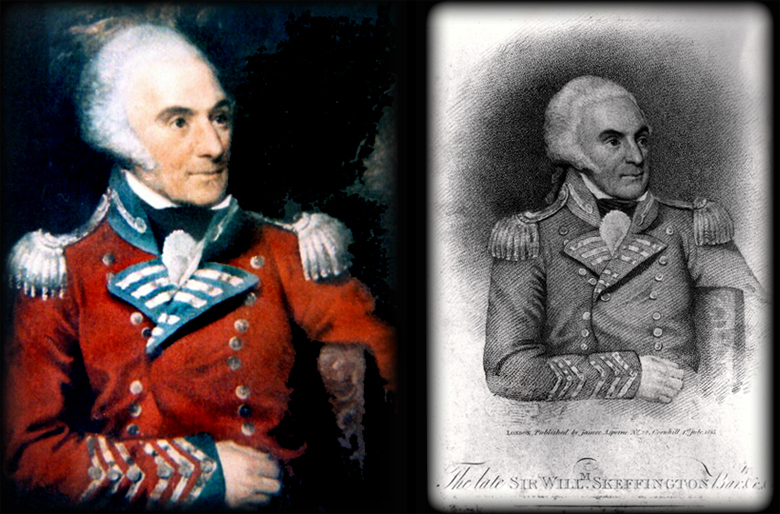
Colonel Sir
William Charles Farrell-Skeffington, 1st Baronet,
Bart.
(b. 24 June 1742 – d. 26 January 1815)
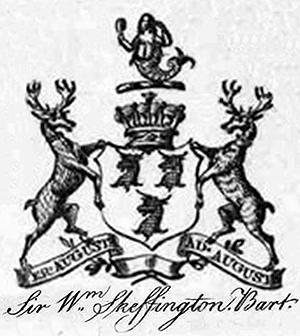
Command:-
9th of May 1794 to the 27th of November 1803.
He
was elected to command the "Leicester Regiment of Gentlemen and
Yeomanry, and his colonelcy was gazetted on 9th May 1794. He had
previously served for seventeen years in the 1st Foot Guards,
and was fifty-two years of age when he was appointed to the
Yeomanry.
The regiment was disbanded in 1802, to be re-raised in 1803,
still with Sir William in command, and it has had a continuous
existence since the as either horsed or mechanised cavalry.
The Leicestershire Yeomanry were formed at the Three Crowns
Inn, Leicester on 10 April 1794 to meet the threat of a French
invasion. As with most Yeomanry regiments, they were supported
by local subscription. On the 14th of June 1794, the "Leicester
Herald" reported that: 'Maj Sir W Skeffingham and Capt Curzon of the Leicester Independent
Cavalry kissed the King's hand on Wednesday on having completed
their complement of men.' Six Troops were raised and they
mustered on the 4th July 1794 on Leicester Race ground.
In 1803 the Regiment appeared in the
Militia List as:-
'The Royal Leicestershire Regiment of Gentlemen
and Yeomanry Cavalry'
the only time the Royal title was used.
They were awarded the 'Prince Albert's Own' title in 1844 after
providing an escort for the Queen and the Prince Consort to
Belvoir Castle. They did not see action until the Boer War in1899.
The
LOYAL LEICESTERSHIRE
volunteer
CAVALRY
Also known as :-
i) Leicestershire Regiment of Gentlemen and Yeomanry
ii) Loyal Leicestershire Gentlemen and Yeomanry
iii) Loyal Leicester Yeomanry
War Office : List of the Officers : Gentleman & Yeomanry :
Leicester (1794/95/97)
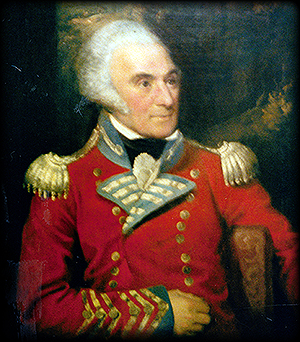
Colonel William C Skeffington, Bart
9th of May 1974-1803
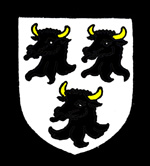
The image is from the original oil painting by Samuel
Drummond, RA, painted in 1794.
J.S.A.H.R, Vol XLIII, p27-29 published 1965 Vol No.43 (by
Major A McK Annand ) :- William Charles Farrell
(later Skeffington) was born in Jermyn Street, London, 24th June
1742, being a member of a family originally coming from
Connaught and descended from the princes of Annaly [1].
On the 11th of February , 1761, William Farrell obtained an
Ensigncy in the 1st Foot Guards, and whilst in that rank on the
9th December, 1765, married at St. Peter le Poer, London,
Catherine Josepha, the eldest daughter of Micheal Hubbert, of
Tenerife, and a merchant of the City of London. The Hubberts
also, if not of Irish descent, were at least connected with that
country, being nearly allied to the Butlers, Dukes of Ormonde.
It was on the 27th of May, 1768, that Farrell received
promotion to Lieutenant and Captain, and in 1772 he was
appointed one of the esquires to the Duke of York at the
installation of the Knights of Bath. In the same year, on 11th
of June, he assumed the surname and arms of Skeffington, a name
derived from that of a village in Leicestershire [2]. Further
promotion to Captain to Lieutenant-Colonel (still in the 1st
Foot Guards) came on the 5th of February , 1776, and in 1778 he
appears for the last time in the Army Lists. He was created a
baronet on 10th June, 1786.
In the great crisis of 1794, a "General Meeting of the
County of Leicester" was held at the Three Crowns Inn, with
Lord Ferrers in the chair, when it was resolved to raise a
regiment of cavalry not less than 100 men, and on a list of
subscribers being opened Sir William Skeffington contributed
£100. This meeting saw the birth of the Leicestershire Yeomanry,
the command of which was given to Sir William, and it is
recorded in the Leicester Herald of 14th June, 1794,
that "Major Sir W F Skeffington and Captain Curzon of the
Leicestershire Independent Cavalry kissed the King's hand on
Wednesday on having completed their compliment of men." Sir
William's colonelcy of the "Leicestershire Regiment of
Gentlemen and Yeomanry" is date 9th of May, 1794, in the
Yeomanry Lists.
On the 4th of July the Regiment met on the race ground and
were formed into six troops, the muster rolls being made by Mr.
Payne, the regimental clerk [3]. Referring to the 29th of
August, it is recorded
that "On this memorable day the Leicestershire Volunteer
Cavalry received their standards in form," these standards,
two in number, being described as the "royal banner"
(the donation of Lady Charlotte Curzon), and
the "provincial banner," made and given by Miss Linwood
[4]. They were also described elsewhere as the "Colonel's
Standard" and the "Provincial Standard".
1. "Memoir of the late Sir William
Skeffington, Bart." The European Magazine and London Review for
June, 1895.
2. The Dictionary of National Biography,
under the name of his son, Sir Lumley Skeffington, and the
European Magazine. From Skeffington Hall a distant view could be
had of the battle of Naseby (1645).
3. "An outline of the history of the
Leicestershire (Prince Albert's Own) Yeomanry" by Colonel
Codrington DSO OBE TD.
Lt. Col. John Penn Curzon
9th of May 1794-97 (Died 3/11/1797)
House of Commons MPs 1757-97 :- Hon. J P Curzon MP
It
appears that Lady Charlotte Curzon, mentioned above, is possibly
Lady Sophia Charlotte Curzon and the daughter of Admiral of the
Fleet, Richard Howe, 1st Earl Howe and
Mary Hartop, the daughter of Colonel
Chiverton Hartop of Welby in Leicestershire. Penn Assheton
Curzon, Marriage: 31 JUL 1787 at Shenley,
Buckingham, England to Sophia Charlotte Howe,
19 Feb 1762 - 3 Dec 1835.
The House of Commons 1790-1820 :-
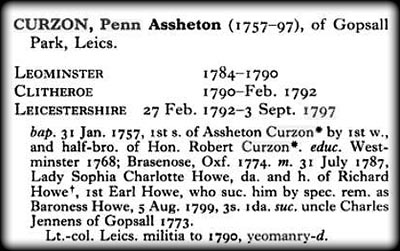
2nd son =
Richard William Penn Curzon-Howe, 11 Dec 1796 - 12 May
1870.
Adjutant Yates
Died in 1799 and buried in St. Margaret's, Leicester.
He was a Sergeant in the Royal Horse Guards (Blues).
Major John Frewen Turner
9th of May 1794-1803
Colonel John Frewen [Turner] of Cold Overton, the son
of the Rev Thomas Frewen (1708-1791) and Esther Simpkin (died
1803), was born on 1 August 1755 and baptised 28 August at
Sapcote. He was sent to Rugby School aged 8. He matriculated at
Queen's College, Oxford on 14 May 1774 and was awarded a BA in
1778; on 4 February 1779 he was admitted to the Middle Temple.
John served as Sheriff of Leicestershire in 1791, he was
Lieutenant-Colonel of Leicestershire Yeomanry (in September 1794
the Corporation of Leicester presented the freedom of the
borough to him as 'Major of the Loyal Leicestershire Volunteer
Cavalry (FRE/1473)) and MP for the Borough of Athlone,
Westmeath, 1807-1812. On 1 August 1808 at St John Westminster he
married Eleanor Clark, the daughter of Charles Clark of
Westminster and his second wife Elizabeth Hay; she was born on
16 January 1786 (FRE/3171). He died at Coventry on 1 February
1829 and was buried at Cold Overton; she died in 1879. Although
John Frewen assumed the arms and surname of the Turner family
when he inherited their Leicestershire estate in 1791.
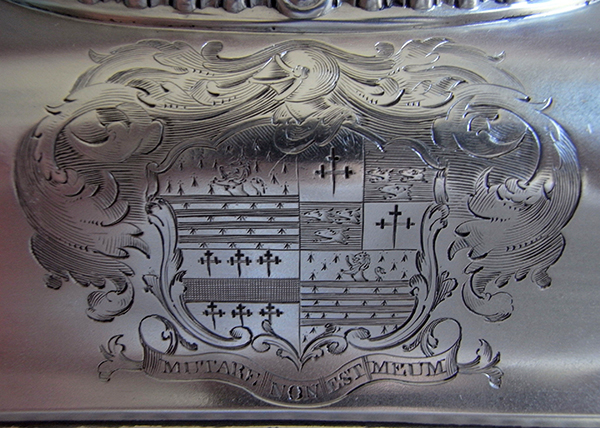
The Armorial and Motto are those of Frewen, quartering
Scott of Halden, Conger of Congerhurst and Laton of Laton. They
are specifically those of John Frewen Esq., of Brickwall House,
Northiam, Co Sussex and Cold Overton House, Co. Leicestershire.
He was born in 1765 and adopted the name of Frewen Turner on his
inheritance of the Yorkshire estates of Brafferton from Mrs
Frewen Turner. He also succeeded later to the estates of Cold
Overton in Leicestershire. He was magistrate. High Sheriff and
DL for Leicestershire, Lietenant Colonel in the Leicestershire
Yeomanry and MP for Athlone. He died in 1829 and was buried at
Cold Overton. His will devised the division of his estates
between his two surviving sons.
Adjutant George Mantle
Adjutant Frederick Jackson
3rd Light Dragoons, made Adj. on the death of Adj. Bowater on
the 2nd of August 1834.
Captain Brown
Captain Edward Farnham
9th of May 1794-1803
Captain John Heyrick
9th of May 1794-97
Capt Lieut. Edwin Andrew Burnaby
Lieutenant on the 9th of May 1794 and then promoted on the
16th April 1795 -1803.
Captain Robert Haymes
9th of May 1794-1803
High Sheriff of Leicestershire in 1813. Major in 1799.
Lt. William Brown
9th of May 1794-1803
London Gazette, Issue 14072, Page 1176:-
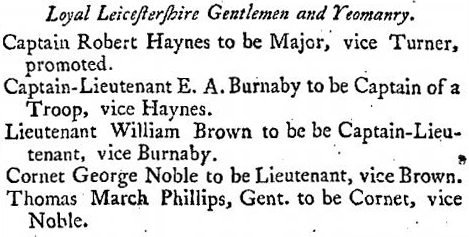
Lt. King
9th of May 1794-1803
Lt. L C Humphrey
9th of May 1794
Lt Edward Hodges
9th of May 1794-1803
Lt Ambrose J Salisbury
9th of May 1794, promoted Lieutenant 23
Dec1795-1803
Cornet Samuel Steel Perkins
9th of May 1794-76
Samuel Steele Perkins the elder of Orton on the Hill,
esq. (only son and heir of Elizabeth Perkins, widow, who was
sister & co-heiress of Richard Farmer of Witherley, dec'd, and
of Ann Gresley, widow, deceased. [Assignment of Mortgage DE322/7/2/2 8th
April 1806 :- Leics & Rutland County records : Witherley Estate
Records]
Cornet Deverell
9th of May 1794-1803
Cornet George Anthony Legh-Keck
Cornet 1798, Lieutenant 1801.
The House of Commons 1790-1820 :-
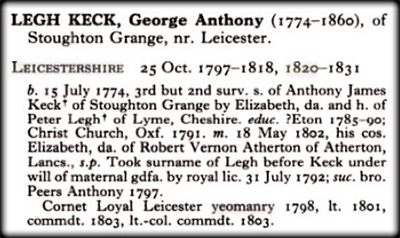
Cornet George Noble
9th of May 1794-1803
Cornet Hulse
18th July 1796 -1803
Cornet William Dickenson
9th of May 1794-1803
The London Gazette, Edition No.13693, p829, 16th August 1794
:-

The London Gazette, Edition No.15010, p344, 28th April 1798
:-

Cornet Thomas Hickinbotham
13th May 1795-1803
Cornet Palmer
26th Jan 1797-1803
Cornet Phillipps
Cornet William Haynes
26th Jan 1797-1803
Cornet Salisbury
Asst. Surgeon Thomas Macauley
Appt. 5th Oct1833 vice Oliver, resigned.
Agent, Messrs. Meyrick, Spring Garden.
LEICESTER TROOP
Captain Charles Loraine Smith
15th August 1795
The Gentleman's Magazine, Vol 4, p.430 :- Aug 23 1835, at
Enderby Hall, Leicestershire, aged 84. He was the second son of
Sir Charles Loraine Smith, the third baronet of Kirke-Hale, Co.
Northumberland
CAPTAIN,
John Heyrick, Jun.
LIEUTENANT,
Edward Hodges.
CORNET,
George Noble
TROOPERS |
| Edward Bankart |
Thomas Miller |
| Francis Burgess |
Edward Marson |
| Thomas Burley |
James Nutt |
| John Brown |
Thomas Stanley Nedham |
| Robert Cooper |
Thomas Peach |
| William Cox |
William Parsons |
| Joseph Cradock |
Thomas Read |
| John Dalby |
Samual Roberts |
| John Eames |
John Rowland |
| John Elia |
Joseph Spencer |
| John Fox |
Joseph Smith, Jun |
| John Hall |
William T. Simpson |
| William Heard |
John Throsby |
| Edward Harrison |
John Throsby, Jun |
| Henry Hetherington |
Henry Temple |
| George Ireland |
John Walker |
| Thomas Jeffcutt |
Robert walker |
| John Kettleby |
Henry Watchorn |
| Henry King |
John Watchorn |
| Welby King |
William Whitehead |
| Thomas Lowe |
Thomas Wright |
| Micheal Miles |
Clement Winstanley |
| Charles Meredith |
John Willows |
Other County Yeomanry Cavalry
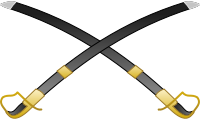
The Lutterworth Independent Troop of Yeomanry Cavalry
(1803-07)
At Lutterworth the effort Henry Otoway brought into being a
Troop of Loyal Lutterworth Gentleman and Yeomanry. A short lived body of county cavalry that were absorbed by
the Leicestershire Yeomanry who recruited from the area.
The Ashby de la Zouche Cavalry Association (1798 -
1802)
Another short lived body of county cavalry that were absorbed
by the Leicestershire Yeomanry who recruited from the area. Only
1 troop was raised at Ashby.
The Leicestershire Provisional
Cavalry (1797 - 1800)
Raised by the 5th Duke of Rutland as Lord Lieutenant of
Leicestershire and was a sizeable force.
The Rutland Yeomanry Cavalry (1794 - 1828)
The RYC were the very first Yeomanry Cavalry Regiment to be
raised in the Kingdom in 1794 and were in service along with the
neighbouring Leicestershire Regiment of Yeomanry Cavalry (a
close second in their establishment) until their disbandment in
1828. Shortly after this the Leicestershire Yeomanry started to
recruit from Rutland.
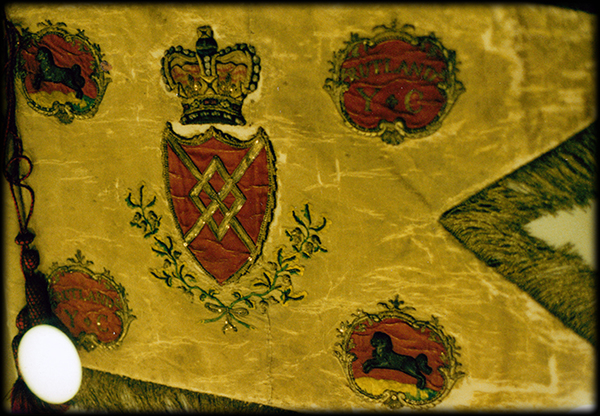
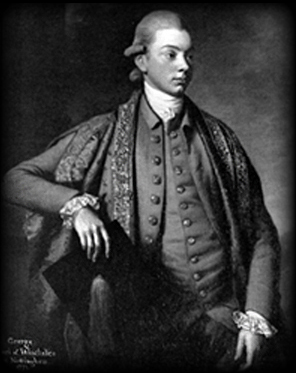
Colonel The 9th Earl of Winchelsea
The first commanding officer of the RYC was Colonel The
9th Earl of Winchelsea, George Finch. George Finch, 9th
Earl of Winchilsea KG PC FRS (4 November 1752 – 2 August 1826)
was an important figure in the history of
cricket. His main contributions to the game were patronage
and organisation, but Winchilsea was also a very keen player.
Finch was the son of William Finch, who was in turn the son
of Daniel Finch, 2nd Earl of Nottingham (1647–1730), and
Charlotte Fermor, daughter of Thomas Fermor, 1st Earl of Pomfret.
His sister was Sophia Finch. His father died in 1766 and he
inherited the Winchilsea title in 1769, from a more distant
relation. He was a military man and in his younger days he
served with the 87th Foot in the American Revolutionary War from
1776 to 1780, finishing as a lieutenant-colonel. He was Lord
Lieutenant of Rutland for many years.
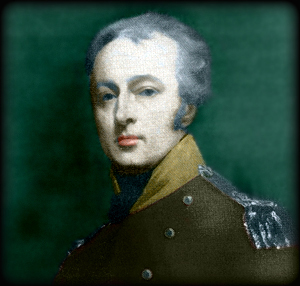
Sir Gerard Noel Edwards, of the Gainsborough family
of Exton.
The Riding School built for the
Rutland Fencibles by the MP Gerard Noel Edwards now houses the
Rutland County Museum, this was built opposite Sir Gerard's
mansion in Oakham. The riding school was also used by the
PAOLYC and the school was in use by the regiment right up to the
Great War and beyond. The men of the County of Rutland, as A
Squadron LY PAO, fought with distinction with the Regiment at
the Battle of Frezenberg Ridge in May 1915. Colonel P C
Evans-Freke, who died in that battle, was also a Rutland man.
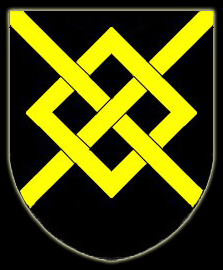
The badge of the RYC was taken from the Harrington Arms. The
noble family of Harrington, Barons of Exton, in the county of
Rutland. In 1596 Lord
Cromwell was granted a licence to sell the Castle and Manor of
Oakham, Rutland to Sir John Harrington of Exton.
The London Gazette, Edition No.13693, p829, 16th August 1794
:-
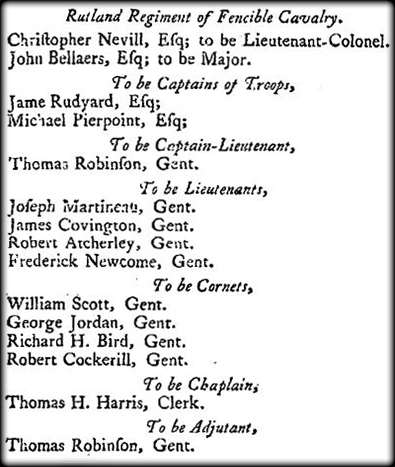
|

